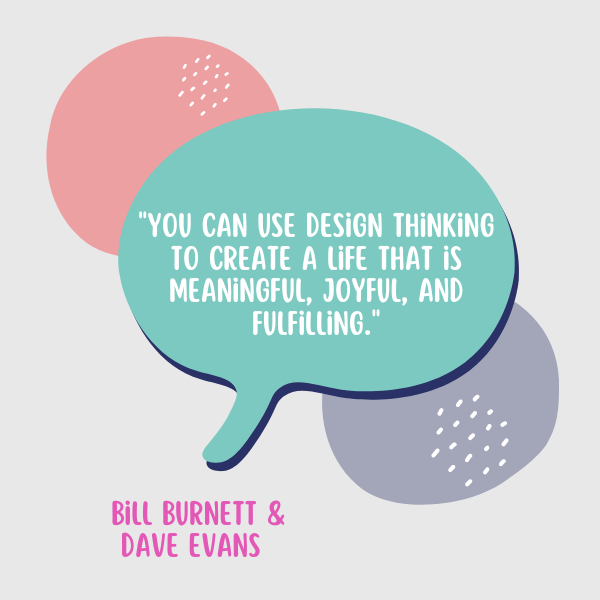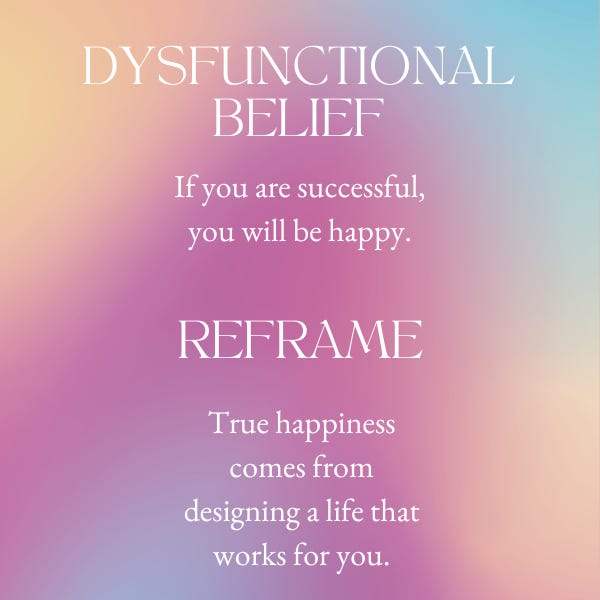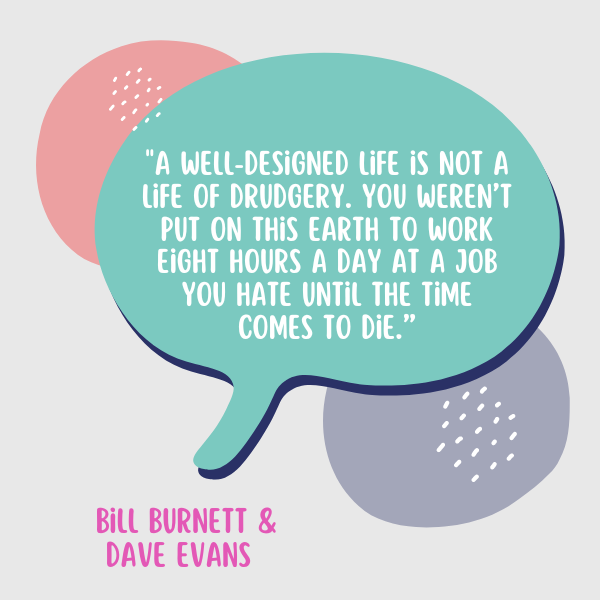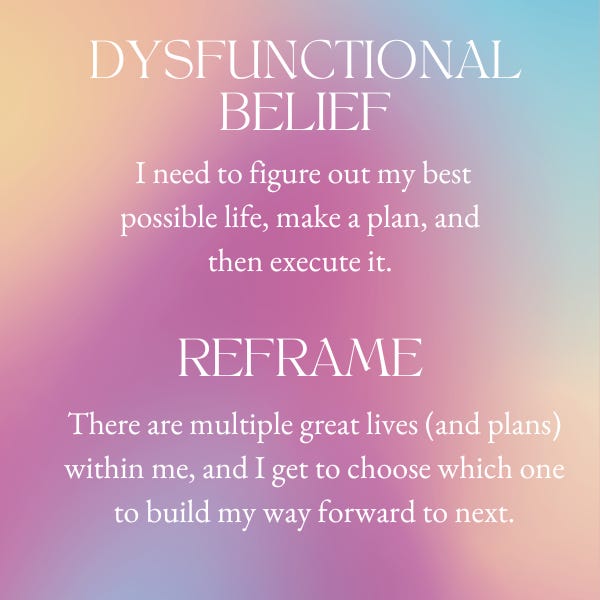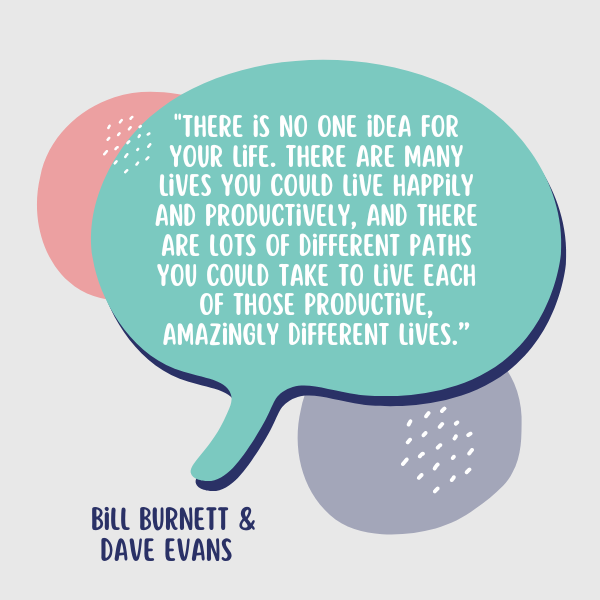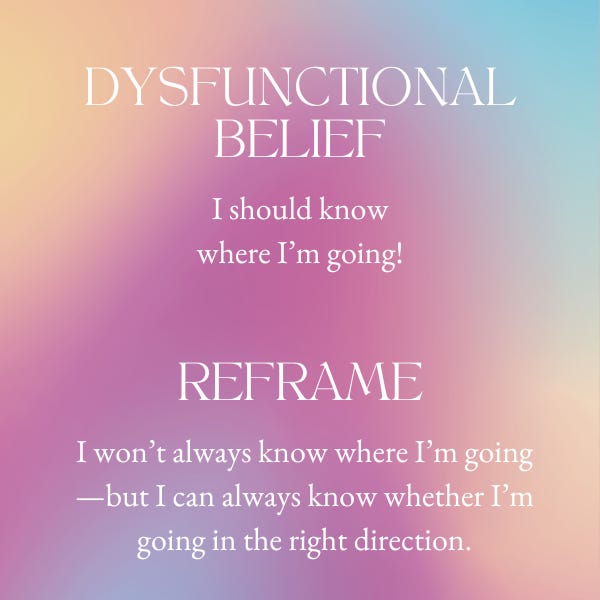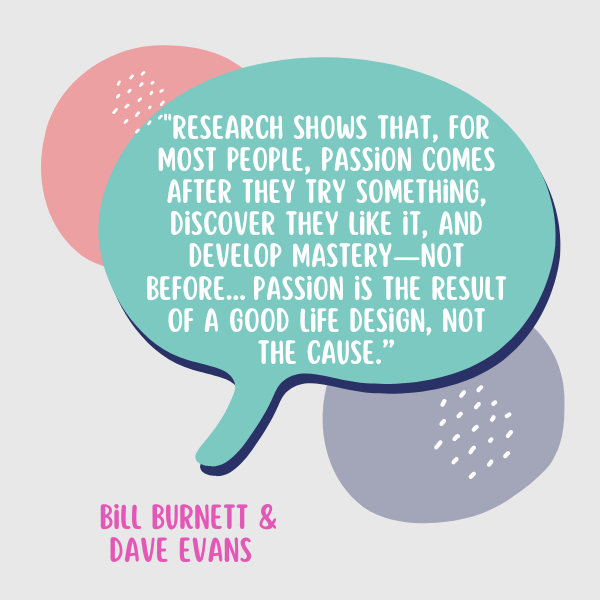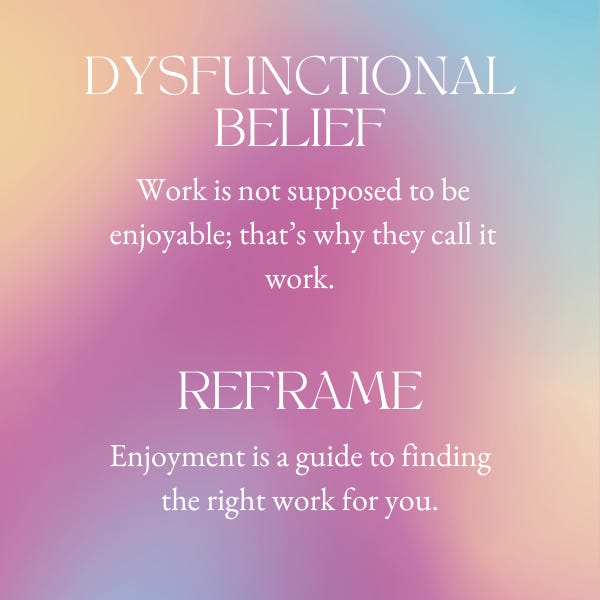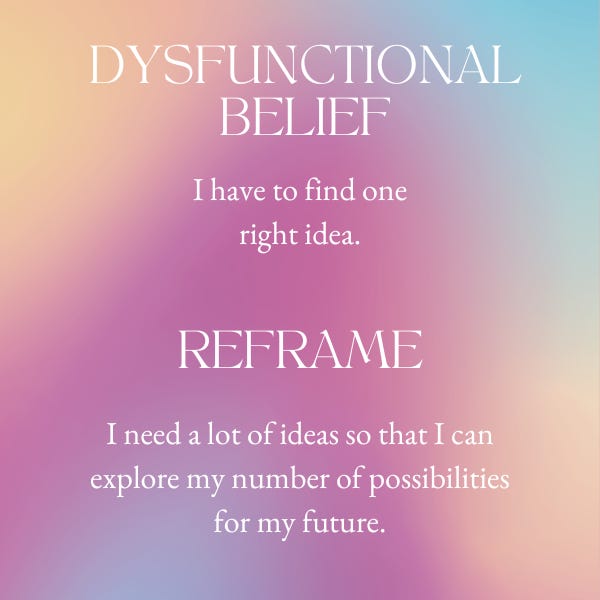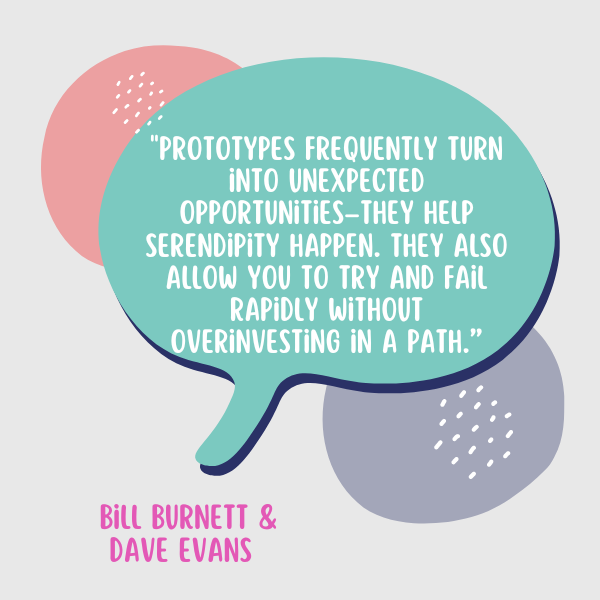Designing Your Life
Stanford professors Bill Burnett and Dave Evans show how to apply the principles of design thinking to the problem of designing your life
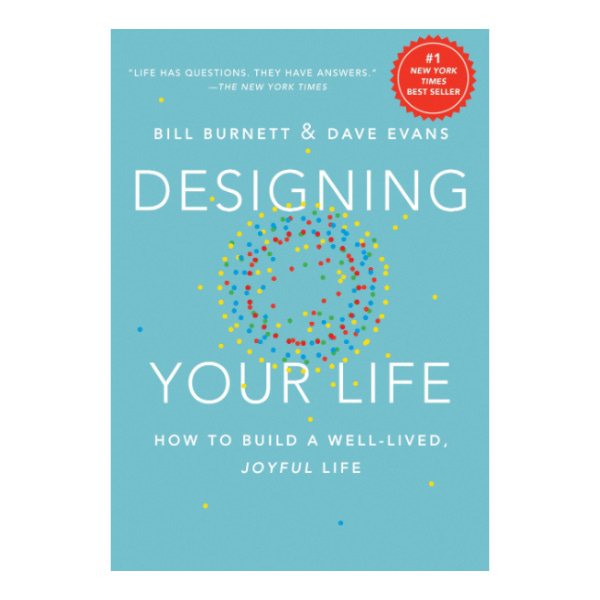
Both Burnett and Evans were successful Silicon Valley innovators. Burnett had watched hundreds of students at Stanford struggle with figuring out life after graduation. Evans taught at UC Berkeley where he’d developed a course called “How to Find Your Vocation.” They decided to partner together to bring a new course to Stanford to teach students how to use design thinking to figure out what you want to be when you grow up.
That course has gone on to become one of the most popular elective classes at Stanford. Burnett and Evans wrote Designing Your Life so you can have a well-designed life even if you don’t go to Stanford.
Burnett and Evans believe people need a design process to help them figure out what they want and how to create it
In Designing Your Life, Burnett and Evans make clear step-by-step how to think like a designer and how to design and build a life in which you can thrive.
Their life by design approach can help anyone answer the fundamental questions that haunt us all: How do I find a job that I like or maybe even love? How do I balance my career with my family? How do I build a career that will make me a good living? How can I make a difference in the world?
Burnett and Evans show how reframing is key to helping people get unstuck
The statistics are sobering:
Only 20% of young people age 12-26 have a clear vision of where they want to go, what they want to accomplish in life, and why
In the U.S., only 27% of college grads end up in a career related to their majors
According to Burnett and Evans, “The idea that what you major in is what you will do for the rest of your life is a dysfunctional belief that prevents people from designing the life they want.”
“In life design, we reframe a lot. The biggest reframe is that your life can’t be perfectly planned–there isn’t just one solution to your life, and that’s a good thing. There are many designs for your life, all filled with hope for the kind of creative and unfolding reality that makes life worth living into,” said Burnett and Evans.
According to Burnett and Evans, “The reframe for the question, ‘What do you want to be when you grow up?’ is this: ‘Who or what do you want to grow into?’ Life is all about growth and change…It’s not about answering the question once and for all and then it’s all done. Even those who checked a box for doctor, lawyer, or engineer. These are just vague directions on a life path. There are so many questions that persist at every step of the way. What people need is a process–a design process–for figuring out what they want, whom they want to grow into, and how to create a life they love.”
Burnett and Evans make clear that you don’t need to know your passion to design a life you love
Many people operate under the dysfunctional belief that they just need to find out what they are passionate about, according to Burnett and Evans. They believe that once they know their passion, everything else will somehow magically fall into place. Burnett and Evans believe differently, “We’re not very passionate about finding your passion. We believe that people actually need to take time to develop a passion. And the research shows that, for most people, passion comes after they try something, discover they like it, and develop mastery–not before. To put it more succinctly: passion is the result of a good life design, not the cause.”
According to Burnett and Evans, people are passionate about many different things, and the only way to know what they want to do is to prototype some potential lives, try them out, and see what really resonates with them. The professors note, “Once you know how to prototype your way forward, you are on the path to discovering the things you truly love, passion or not.”
According to Burnett and Evans, designers don’t think their way forward; designers build their way forward
Instead of dreaming up a lot of fun fantasies that have no relationship to the real world, Burnett and Evans encourage you to be committed to building your way forward.
They note that designers try things, test things out, and create prototype after prototype until they find what works. Sometimes they even find that the problem is entirely different from what they first thought it was.
Instead of focusing on comprehensively researching the best data for all aspects of a plan, Burnett and Evans recommend building “prototypes” to explore questions about alternatives. (They provide numerous tools for doing this in the book.)
They also note that design is a collaborative process, and many of the best ideas are going to come from other people. Designing Your Life describes how to get advisers and mentors to assist and shows how to formulate the right questions to ask. Check it out!




